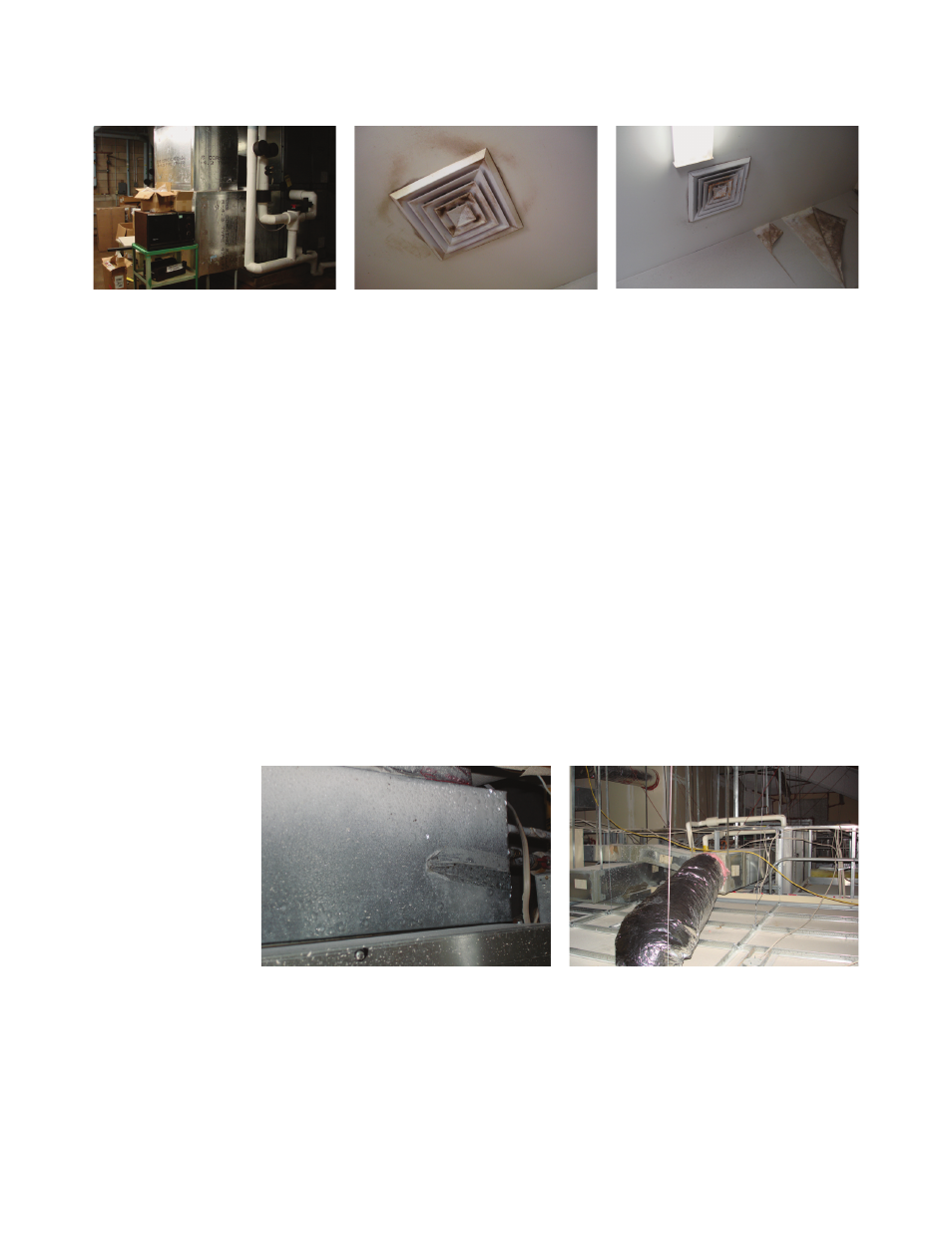Retrotec USACE User Manual
Page 160

D30 ENERGY & PROCESS ASSESSMENT PROTOCOL
D.2.2.10 HVAC Systems Supply Air with No Reheat (Waste)
Figure D49. AHU is connected to the central plant with a two-pipe system mold problems on (middle) and around (right)
air diffuser supplying cold air jets.
Buildings are connected to central heating and cooling systems using a two-
pipe building distribution system (Figure D49), which supplies hot water for
heating during the heating season and chilled water for cooling during the
cooling season. During “shoulder” seasons with heating needs at night and
cooling needs during daytime, rooms have too low room air temperature at
night or too high air temperature during the day time. In humid climates, in
buildings that are not airtight, cold air jets cool surfaces adjacent to air diffuser.
This wastes energy and provides conditions for room air moisture condensa-
tion on these surfaces, creating mold and mildew problems.
D.2.2.11 Poorly Insulated Fan Coil Units Are Located in
Unconditioned Space (Waste)
Poorly insulated fan coil units installed in unconditioned space can have exces-
sive heat losses and gains (Figure D50). In humid climates, cold surfaces result
in moisture condensation. When the size of the condensate collecting pans and
drainage are insuffi cient, water overfl ows the pan and drips on ceiling tiles,
creating water damage and mold and mildew problems.
Figure D50. Fan coil units located in the attic with no humidity control (left), condensation on fan coil
cold surfaces (right).
